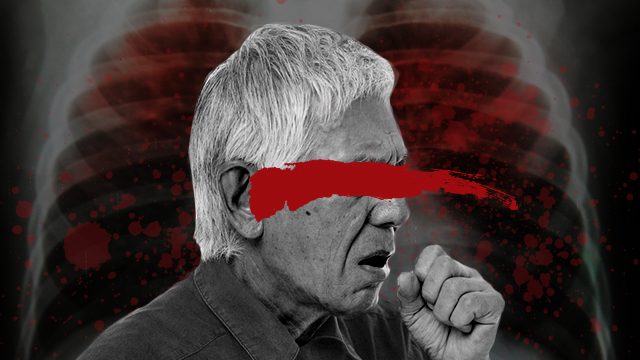SUMMARY
This is AI generated summarization, which may have errors. For context, always refer to the full article.

NEW YORK, USA – Ahead of the first ever United Nations (UN) High-Level Meeting on tuberculosis (TB), health experts called on the world body to help reverse the global TB health crisis in the same way that it did for AIDS.
On September 26, the UN will convene a high-level meeting on TB on the sidelines of the UN General Assembly. It is seen as the biggest and best opportunity for governments across the world to come together and solidify political commitment, increase financial resources, and establish reporting and accountability measures for a coordinated global response to TB.
It will be the first time for the UN to hold a high-level meeting for TB, and only the fifth time that the UN has called for a high-level meeting on a global health issue.
TB, a bacterial infection that mainly attacks the lungs, afflicted more than 10.4 million people and caused more than 1.7 million deaths in 2017.
TB is now considered the world’s biggest infectious disease killer. Worldwide, TB incidence rate is falling at about 2% per yea,r but according to health experts, infection rates need to fall by 4% to 5% per year to reach the 2020 milestone in the End TB Strategy.
“With so many avoidable TB deaths at stake, it is almost surreal to consider that there has never been a UN High-Level Meeting on TB before. The inaugural meeting being held this week in New York has to count: the world’s political leaders have an opportunity to end the unnecessary suffering and loss of millions of lives from TB,” International AIDS Society President Anton Pozniak and International Union Against Tuberculosis and Lung Disease (The Union) Executive Director José Castro said in a statement.
According to Pozniak and Castro, much progress was made in reversing the AIDS epidemic after the UN convened a high-level meeting on AIDS in 2001, the first time heads of state from around the world gathered to solve a global health crisis.
Political commitments were made through the creation of the Global Fund to Fight AIDS, Tuberculosis and Malaria (The Global Fund), and pharmaceuticals began producing anti-retroviral drugs (medicines that slow down the progression of the HIV virus in the body) at a lower cost, making them affordable and accessible to sub-Saharan Africa, the world’s most affected region.
Currently, nearly 22 million people are on life-saving anti-retroviral therapy (ART) – a monumental increase from the barely 1 million who were on treatment in 2001. AIDS-related deaths are on the decline worldwide.
“As we did in the case of HIV at the landmark 2001 special UN meeting, we must move from concern to concrete action. We must see tangible commitments and a clear strategy to move forward in order to change the course of history” Pozniak and Castro said in their joint statement.
The two called for action steps in the following areas of the TB response:
Updating and innovating old diagnostic and TB management tools
Treatment and management of TB continue to rely heavily on technologies that are decades old. There is a lack of modern tools and technology needed to efficiently prevent, diagnose, and treat the disease. There is a similar challenge with TB diagnostic – the most widely used tool is more than a century old.
An effective test for diagnosing TB in children does not even exist. More than one million children under the age of 15 fall sick to TB every single year and of these, 239,000 – nearly 1 in 4 – die.
Funding for TB prevention and care needs to be doubled from $6 billion to $13 billion annually. TB research and development are severely underfunded with at least an additional $1.3 billion per year needed to accelerate development of innovative TB management and treatment tools.
New medicines to treat TB and increasing cases of multi-drug resistant TB
In the past 50 years, only two new TB medicines have come to market. The World Health Organization estimated that what is needed is a pipeline of a least 18.
Meanwhile, TB drug resistance has gotten worse. TB makes up 1 in 3 of all the deaths from drug-resistant bacteria, viruses, and fungi. Every year, nearly 600,000 people develop drug-resistant TB, and only 1 and 4 people receive treatment.
Vaccine
The development of a TB vaccine or new drug treatment is seen to lower the risk of infection and lower the risk of TB in an estimated 1.7 billion people latently infected with TB.
An estimated $1.25 billion is needed to fund the development of a vaccine to prevent TB and control the spread of drug-resistant strains.
More collaborative HIV and TB Programs
Controlling tuberculosis in the context of HIV continues to be a major health challenge. Globally, less than half of TB cases are diagnosed before death, and only about half of all patients with tuberculosis know their HIV status.
In 2016, only 42% of all people living with HIV who have tuberculosis were estimated to be receiving ART. People with HIV/tuberculosis co-infection who develop active tuberculosis disease need to be found and promptly treated with tuberculosis drugs and ART.
Concrete action from governments
The UN high-level meeting is expected to result in commitments from heads of state and governments outlined in a Political Declaration that will form the basis for the future TB response.
Key priorities in the TB response include:
- A coordinated global response to end TB
- Substantially increasing financial resources for TB research and development
- Measurable targets and commitments from governments and key stakeholders for 2020 and 2025
- An accountability system with regular monitoring and evaluation
– Rappler.com
Ana P. Santos is in New York covering the United Nations High-Level Meeting on TB with support from the Stop TB Partnership.
Add a comment
How does this make you feel?
There are no comments yet. Add your comment to start the conversation.